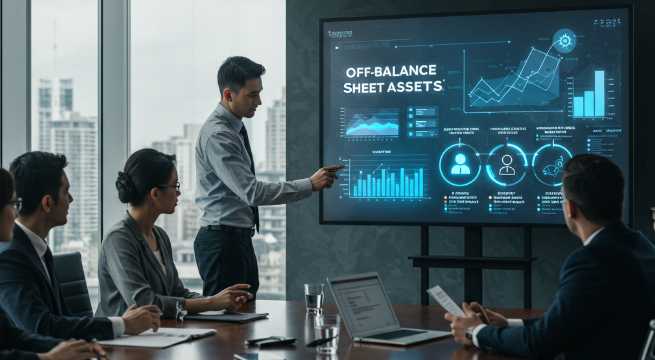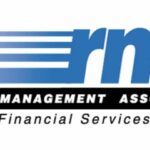A balance sheet is a financial statement that provides a snapshot of a company’s financial position at a specific point in time. It is prepared by listing a business’s assets (what it owns), liabilities (what it owes), and shareholders’ equity (the owners’ stake in the company), ensuring that the fundamental equation Assets – Liabilities = Equity is balanced. Most people think of balance sheets in terms of financial health, primarily created for lenders to assess creditworthiness. However, because a balance sheet records only past transactions and tangible assets, it doesn’t fully capture a business’s potential. I learned this firsthand when selling a business—something I’ve done twice. To get a more accurate valuation, I had to look beyond the balance sheet and consider off-balance sheet (OBS) assets and liabilities, which play a crucial role in determining a company’s true worth.
Understanding Off-Balance Sheet Assets and Liabilities
In simple terms, off-balance sheet items are things that affect the value and operations of a business but don’t show up on the standard balance sheet. These can be valuable assets, like a strong brand reputation, or hidden liabilities, like pending legal claims. They matter because they influence financial health, risk exposure, and even the sale price of a business.
Traditional accounting rules, such as Generally Accepted Accounting Principles (GAAP) and International Financial Reporting Standards (IFRS), define what qualifies as a balance sheet asset or liability. However, small business owners know that financial reports rarely tell the whole story.
Why OBS Assets Matter When Selling a Business
When selling my businesses, I quickly realized that buyers wanted a complete picture—not just the financials but the true earning potential and risks. I would have undervalued my businesses if I had only presented what was on the balance sheet. Here’s why OBS assets played a key role:
- Brand Value and Goodwill – A strong reputation, a loyal customer base, and brand recognition were major selling points, even though they weren’t listed as tangible assets.
- Customer Contracts and Relationships – Long-term contracts and agreements with customers represented future revenue streams.
- Supplier Agreements – Exclusive partnerships and locked-in supplier discounts created operational efficiencies and profitability.
- Specialized Knowledge – Our employees possessed unique domain expertise, providing a competitive edge that couldn’t easily be replicated.
- Robust Infrastructure – We had a well-developed operational framework that supported efficiency and scalability, making our business more resilient and valuable.
Each one of these was an OBS asset that made my two businesses more valuable to buyers.
Presenting OBS Assets to Different Stakeholders
Off-balance sheet assets can play a crucial role in shaping how a business is perceived by key stakeholders. While these assets may not be formally recorded in financial statements, they contribute to the overall value, stability, and growth potential of a company. Effectively presenting OBS assets to lenders, business partners, and investors can improve financing opportunities, strategic collaborations, and investment appeal. Each group has different priorities, so it’s essential to tailor the presentation of these assets to align with their specific concerns and interests.
Lenders: Making the Case for Creditworthiness
Lenders primarily care about a business’s ability to repay loans. Since OBS assets don’t appear in financial statements, business owners must highlight them separately.
- Financial Notes and Disclosures – Some OBS assets, such as leases or contracts, may be mentioned in footnotes or addendums to financial reports.
- Supporting Documentation – Providing evidence of brand strength, such as customer retention rates, social proof (reviews and testimonials), and intellectual property filings, helps reinforce credibility.
- Collateral Discussions – OBS assets can sometimes be used to negotiate better loan terms if they demonstrate revenue stability or future earning potential.
Business Partners: Evaluating Strategic Value
Potential partners want to see the full scope of a business’s value beyond traditional financial statements.
- Pitch Decks and Reports – Demonstrating key OBS assets, such as customer databases or partnerships, can make the business more attractive.
- Valuation Models – Showing how OBS assets contribute to revenue growth or market positioning strengthens a business’s appeal.
- Operational Agreements – Highlighting supplier deals or exclusivity contracts shows how a business maintains a competitive advantage.
Investors: Assessing Long-Term Value and Growth Potential
Investors don’t just want to see historical financials; they want to understand what’s ahead.
- Business Valuation Reports – Professional appraisals of brand value, intellectual property, and goodwill help investors assess a business’s future worth.
- Growth Metrics – Demonstrating how OBS assets, such as strong customer relationships, contribute to revenue growth and strengthen an investment case.
- Future Earnings Potential – Highlighting licensing agreements, recurring revenue models, or real estate options can boost investor confidence.
Do Customers Care About OBS Assets?
Customers typically don’t analyze a company’s financials, but they do experience the impact of certain OBS assets. These include:
- Brand Reputation and Trust – Customers prefer businesses with a solid reputation, strong reviews, and a well-known brand.
- Long-Term Stability – If a business has strong supplier relationships or long-term contracts, customers enjoy price stability and reliable service.
- Intellectual Property & Unique Offerings – Patented products or proprietary services create differentiation, which customers appreciate.
A great example of how off-balance sheet assets impact customers is a well-established local catering company. While its balance sheet might show standard assets like kitchen equipment and vehicles, its real value extends beyond that in ways that directly benefit customers. The company has built strong long-term relationships with event venues, giving customers access to exclusive catering options they might not get elsewhere. Additionally, its extensive customer list with repeat clients means it has a deep understanding of customer preferences, allowing it to offer personalized service and menu options. These OBS assets—exclusive agreements and customer loyalty—don’t appear in financial statements but create a better experience for customers, driving higher satisfaction and long-term business success.
External Factors Affecting OBS Assets and Liabilities
Off-balance sheet assets and liabilities are not just influenced by internal business decisions—they are also shaped by external events. Economic trends, regulatory changes, and technological advancements can all have a profound impact on a company’s financial standing. Here are some key external factors to consider:
- Tariffs and Trade Policies – Changes in tariffs can impact supplier agreements and inventory costs, affecting a business’s cost structure and competitiveness.
- Supply Chain Disruptions – Global events, such as pandemics or geopolitical tensions, can cause supply shortages, increasing costs and limiting production capacity.
- Technological Changes – Advances in automation, AI, or industry-specific innovations may either enhance a business’s OBS assets (through improved infrastructure) or make certain knowledge-based assets obsolete.
- Regulatory Shifts – More stringent regulations could introduce compliance costs (OBS liabilities), while deregulation might create new market opportunities.
- Economic Swings – Inflation, recessions, or booming markets affect customer demand, business valuations, and the perceived worth of intangible assets like brand goodwill.
By keeping an eye on these external factors, businesses can better anticipate risks and leverage opportunities within their off-balance sheet items.
Recognizing and Managing OBS Liabilities
While OBS assets add value, OBS liabilities represent hidden risks. These can include:
- Loan Guarantees – If a business guarantees another entity’s debt, that risk doesn’t appear on its balance sheet but could lead to financial exposure.
- Pending Legal Issues – Lawsuits, regulatory fines, or tax disputes can impact the business’s future.
- Contractual Obligations – Long-term service contracts or purchase commitments may not be recorded as liabilities but could represent financial burdens.
- Undrawn Credit Lines – While this can be an asset (as future borrowing potential), it can also lead to unexpected financial strain if mismanaged.
How to Make OBS Items Work for You
Understanding and leveraging OBS assets while mitigating OBS liabilities gives small business owners an advantage. Here’s how:
- Track and Document Everything – Keep records of customer agreements, partnerships, and brand growth metrics to support business valuation discussions.
- Use OBS Assets to Strengthen Financing Applications – Show lenders and investors how these assets contribute to revenue generation.
- Reduce OBS Liabilities Where Possible – Renegotiate contracts, address legal concerns early, and minimize contingent liabilities.
- Communicate OBS Value to Customers – Market proprietary advantages, emphasize stability, and reinforce brand strength through testimonials.
Final Thoughts
Balance sheets only tell part of the story. As a business owner, understanding and leveraging off-balance sheet assets and liabilities can help you secure financing, attract investors, and even increase your business’s sale price. Whether you’re applying for a loan, forming partnerships, or preparing for a business sale, knowing how to present OBS items can make all the difference.
Related Post: 3 Key Financial Statements- Balance Sheets, Income Statements and Cash Flow Statements
So, next time you look at your balance sheet, ask yourself: What’s missing? Chances are your business is worth more than those numbers suggest.
What assets are on your off-balance sheet?












